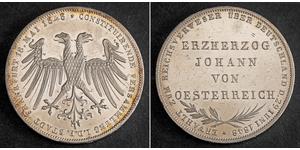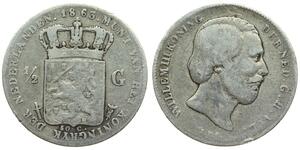1 Solidus Byzantine Empire (330-1453) Gold
Byzantine Empire, Justin I (518-519 AD) Gold Solidus Coin.
Mint Place: Constantinople
References: Friedberg 68, Sear 55.
Mint Period: 518-519 AD (3rd Officina)
Denomination: Gold Histamenon Nomisma
Emperor: Justin I “the Thracian” (518-527 AD)
Diameter: 28mm
Weight: 4.44gm
Material: Gold!
Obverse: Parl-diademed, helmeted, and cuirassed bust of Justin I facing, head slightly right, with spear in right hand over shoulder, shield decorated with horseman motif in left.
Legend: D N IVSTI-NVS PP AVG
Reverse:Victory standing facing, head left, with grounded jeweled staff surmounted by reversed staurogram in right hand. Star in left field.
Legend:
VICTORI-A AVGGG Γ
Exergue: CONOB
The staurogram (⳨), also monogrammatic cross or tau-rho, is a ligature composed of a superposition of the Greek letters tau (Τ) and rho (Ρ). The symbol is of pre-Christian origin. It is found on copper coins minted by Herod I in 37 BC, interpreted as a tr ligature representing trikhalkon indicating the coin value.
Justin I (Latin: Iustinus; Greek: Ἰουστῖνος, translit. Ioustînos; c. 450 – 1 August 527), also called Justin the Thracian (Latin: Justinus Thrax; Greek: Ἰουστῖνος ὁ Θρᾷξ, translit. Ioustînos ho Thrâix), was Eastern Roman emperor from 518 to 527. Born to a peasant family, he rose through the ranks of the army to become commander of the imperial guard and when Emperor Anastasius died, he out-maneouvered his rivals and was elected as his successor, in spite of being around 68 years old. His reign is significant for the founding of the Justinian dynasty that included his eminent nephew, Justinian I, and three succeeding emperors. His consort was Empress Euphemia.
He was noted for his strongly orthodox Christian views. This facilitated the ending of the Acacian schism between the churches of Rome and Constantinople, resulting in good relations between Justin and the papacy. Throughout his reign, he stressed the religious nature of his office and passed edicts against various Christian groups seen at the time as non-Orthodox. In foreign affairs, he used religion as an instrument of state. He endeavoured to cultivate client states on the borders of the Empire, and avoided any significant warfare until late in his reign.
(3205 X 1514 pixels, file size: ~1M)
Posted by: anonymous 2024-07-23
Untitled Document Byzantine Empire, Justin I (518-519 AD) Gold Solidus Coin. NGC Mint State 5/3! Mint Place: Constantinople References: Friedberg 68, Sear 55. Mint Period: 518-519 AD (3rd Officina) Denomination: Gold Histamenon Nomisma Emperor: Justin I "the Thracian" (518-5 ...
(740 X 276 pixels, file size: ~39K)
Posted by: anonymous 2020-11-14
527,Justinianus I. 527-565. Solidus, Konstantinopel. 4,48 g. Büste von vorn mit Kreuzglobus / VICTORI - AAVGGI Engel mit Langkreuz und Kreuzglobus. Im Abschnitt CONOB. Sear 55, MIB 2. GOLD. Vorzüglich.
(1205 X 563 pixels, file size: ~147K)
Posted by: anonymous 2015-03-06
Justin I, 518-527. Gold Solidus (4.43 g) minted at Constantinople. Helmeted and cuirassed bust three-quarter facing to right of Justin I, holding spear and shield. Reverse: Victory standing left holding long staff; star in left field. D.O. 1; S. 55. Light edge marks. Extremely Fine. Estimated ...
(1205 X 609 pixels, file size: ~212K)
Posted by: anonymous 2015-02-26
Justin I. Gold Solidus (4.46 g), 518-527. Constantinople, AD 518/9. D N IVSTI-NVS P P AVG, diademed, helmeted and cuirassed bust of Justin I facing slightly right, holding spear over shoulder and shield with horseman motif on arm. Reverse: VICTORI-A AVGGG, Victory standing left, holding long s ...
2 Gulden Free City of Frankfurt Silver
group has 72 coins / 71 prices
⇑
50 Cent / 1/2 Gulden Kingdom of the Netherlands (1815 - ) Si ...
group has 13 coins / 13 prices
⇑

-500-250-bPusHgTyOrYAAAGQb1RgrOH9.jpg)
-300-150-bPusHgTyOrYAAAGQb1RgrOH9.jpg)
-300-150-I3p_dbXUJBMAAAF1hP_iU8Q4.jpg)
-300-150-Kx4KbzbiTQ0AAAFLHHWgLg6B.jpg)
-300-150-IvQKbzbimLcAAAFLwolKKMPq.jpg)








-300-150-IHcKbzbizFcAAAFRpvtauxkd.jpg)






